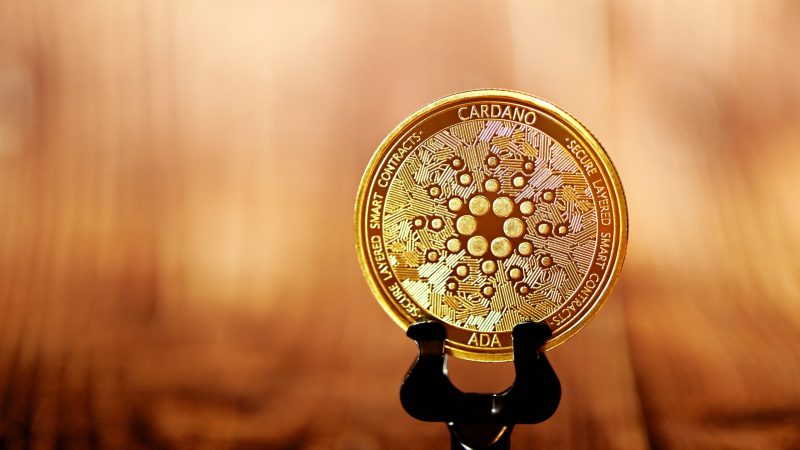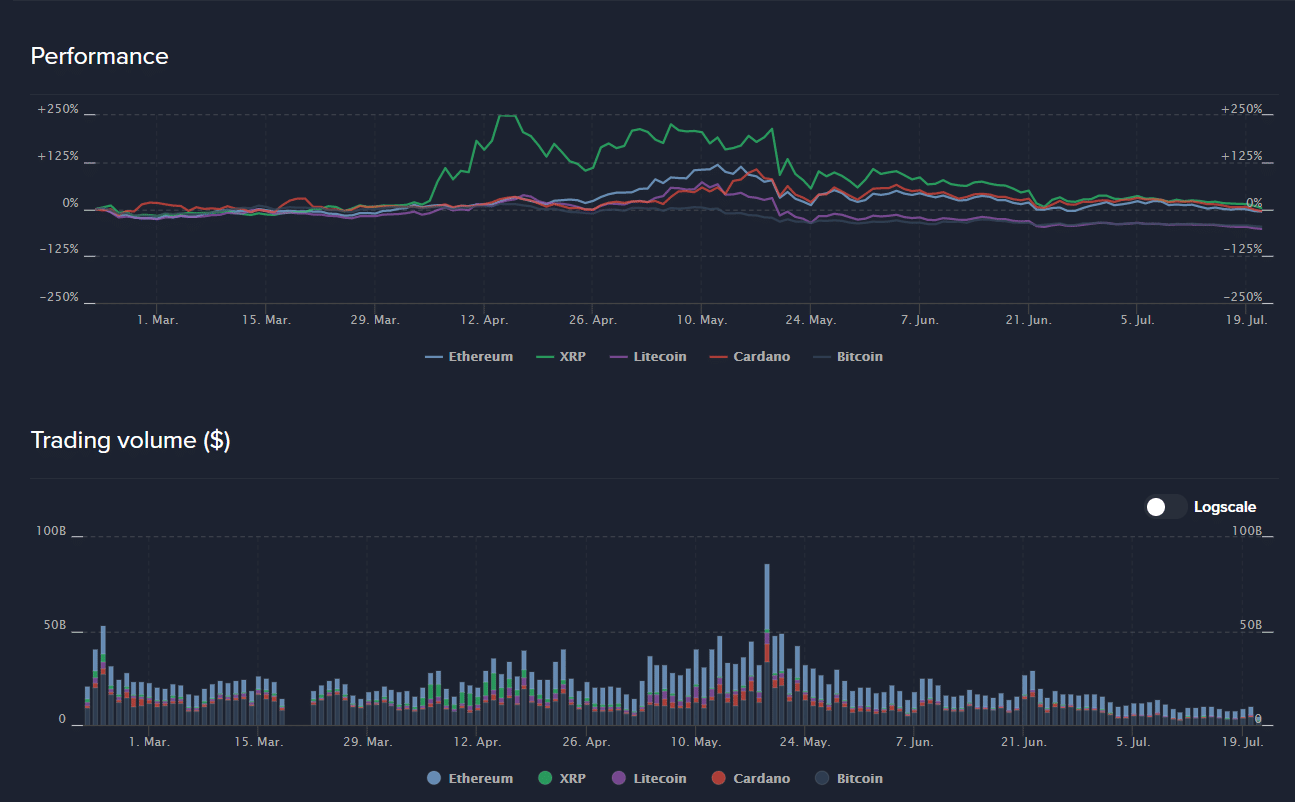Last updated on February 14th, 2022 , 09:01 am

Altcoins: Proceed With Caution
Table of Contents
Is diversification in the crypto space as important as diversification in the stock market? In theory, it sounds like a good idea. That being said, it isn’t common for equities to skyrocket and plunge over 20% on a daily basis as many cryptos do, including Bitcoin.
In addition to cryptos’ wild swings, investors should also take note that more than half of the Top 100 Cryptos have no utility! In other words, other than a store of value (not unlike used Nike sneakers), most cryptos have no working value. Zilch.
Nobody knows what the future holds for cryptocurrencies. To put a case for cryptos into perspective, let’s examine them through the lens of two potentially ticking time bombs: modern fiscal and monetary policy.
The total global debt number currently sits at 280 trillion. In the US alone, the per capita (per person) debt equates to over 85k. It doesn’t matter if you’ve balanced your checkbook, paid off all of your credit cards, and own your house outright. Compliments of the US government, you’re still in debt over 85k. That’s what happens when short-term politicians set long-term fiscal policy.
Highlights
- Mounting US debt could devalue the US dollar, giving an upside advantage to cryptos.
- There are numerous coins aside from bitcoin that provide real-world utility.
- Ethereum, Cardano, Litecoin and Stellar Lumens are all speculative investments with potential upside.
- Stable coins are pegged to the price of a fiat currency, usually the US Dollar.
- Interest rates on stable coins offer investors higher returns than typical banks.
Inflation and Cryptocurrencies
So what does this debt have to do with cryptocurrency? When a government issues excess debt, the demand for that debt naturally goes down. This lower demand causes inflation, and inflation causes the value of fiat currencies (US Dollar, Mexican Peso, etc.) to decrease in value.
In other words, your money in the bank will be worth less than it was, thus decreasing your purchasing power. In the old, old days of 2016, this scenario would have been a great catalyst for a surge in gold, but gold has been losing some of its thunder lately to cryptocurrencies.
Runaway inflation may happen in the coming years, but if history repeats itself, it probably won’t be as severe as me and other doomsayers believe it will be. Even if inflation does sweep through the US economy, who is to say the value of cryptos won’t crash with everything else? There has been an increasing corollary between bitcoin and the Nasdaq recently.
Are cryptocurrencies a safe and viable alternative to the US dollar? In the long run, who knows. It’s the wild west out there folks.
Bitcoin has been on a tear, and the entire world is eager to invest in bitcoin ETFs, but these ETFs are trading at a high premium (and pose risks to investors). We made a list of some Bitcoin alternatives for those looking to diversify their crypto holdings, as well as those who can’t seem to get over their FOMO (fear of missing out) from the latest crypto run.
Here are a few of the wild mustangs that may or may not compete with Bitcoin, just in case you missed that stallion.

New to options trading? Learn the essential concepts of options trading with our FREE 160+ page Options Trading for Beginners PDF.
Market Cap: $323 billion
System: proof of work (PoW)
Before the second half of 2021, Bitcoin never truly had a worthy contender. That all changed recently when the limelight was suddenly shining on Ethereum.
Mark Cuban has compared Etherum not to Bitcoin, but the internet because of its network-like characteristics. While Bitcoin acts simply as a peer-to-peer network cash system, Ethereum is trying to become a currency that also serves as a working infrastructure.
When Russian-Canadian programmer Vitalik Buterin created Ethereum in 2013, he had in mind Bitcoin’s minimal utility. He intended to create a coin that complemented Bitcoin; he ended up creating Bitcoin’s most viable competitor.
In an interview with Business Insider, Buterin compared Bitcoin to a pocket calculator and Ethereum to a multi-functioning smartphone. He believes that increasing the power of a currency makes it more general purpose.
In addition to Ethereum’s platform-like utility, it is also faster than Bitcoin. If you think Etherum is the way of the future, you won’t be alone; companies like Mastercard and JP Morgan are pouring money into ConsenSys, which is building Ethereum blockchain infrastructure.
Here are a few reasons that Ethereum made the number one spot on our list:
◉ Utility
Ethereum has applications beyond the ether token; the vast majority of NFTs are part of the Ethereum blockchain.
◉ Improving Energy Efficiency
Though already more energy-efficient than Bitcoin, Ethereum has plans to cut its energy consumption by 99%!
◉ Smart Contracts
Ethereum uses “smart contracts” to replace intermediaries, which increases the speed and efficiency of transactions.
2. Cardano (ADA)
Market Cap: $55 billion
System: proof of stake (PoS)

After stagnating for a few years, the environment-friendly Cardano recently came screaming back to life. With a market cap of over 58 billion, it has now dwarfed that of Litecoin, which currently has a market cap of only 13 billion. Let’s examine why.
In a recent interview with Forbes, the founder of Cardano, Charles Hoskinson, recently stated Cardano was 1.6 million times more energy-efficient than Bitcoin. On the tail of Elon Musk’s anti-Bitcoin tweet (Musk was concerned about fossil fuels being used to mine for Bitcoins), investors went scrambling for energy-efficient alternatives and found Cardano.
The price of Cardano soon climbed to over $2, an all-time high for the coin. Although this search for energy-efficient coins put Cardano in the public spotlight, it was outperforming before even then. Let’s take a look at a few of Cardano’s compelling characteristics to find out why.
◉ Hard fork combinator
This Cardano feature allows for more seamless forks. The combinator feature will be of particular interest to those who watched the now infamous Bitcoin fork of 2017.
◉ Proof of State Technology
Compared to proof-of-work technology (like that of Bitcoin), proof-of-state technology does not incentivize extreme energy consumption.
◉ Existing real-world application
Cardano has already proved its functioning utility with pre-existing relationships with developing nations such as Georgia.
3. Litecoin (LTC)
Market Cap: $12 billion
System: proof of work (PoW)

Litecoin is a commonly mentioned name in the Crypto world, and a relative dinosaur compared to all the new burgeoning coins. Today, the wildly popular cryptocurrency exchange platform Coinbase offers over 25 currencies. A few years ago, the exchange only offered a few, one of which was Litecoin.
Litecoin, a peer-to-peer coin, was created in 2011 by former Google employee Charlie Lee as a spinoff to Bitcoin. Lee made headlines in 2017 when he sold and donated all of his Litecoin to charity (such charitable minds seem to be more common in the crypto space when compared to traditional banks – hmmm).
Technically speaking, Litecoin is nearly indistinguishable from Bitcoin. Here are three of the very few advantageous reasons to choose Litecoin over Bitcoin.
◉ Speed
Litecoin aims to process a block in 2.5 minutes. This is faster than Bitcoins average of 10 minutes.
◉ Script Algorithm
Litecoin’s usage of Script in its proof-of-work algorithm may ultimately result in making the coin more accessible to users when compared to Bitcoin’s more antiquated SHA-256 algorithm.
◉ Market Cap
Bitcoin’s market cap currently sits at 958 billion. In contrast, Litecoin’s market cap is currently under 12 billion. Considering the similarities of these two currencies, and Litecoin even beating Bitcoin on a few levels (such as Script), Litecoin may have some catching up to do.
4. Stellar Lumens (XLM)
Market Cap: $8.8 billion
System: open source software
The fourth coin on our list was a toss-up between Stellar Lumens (XLM) and Ripple (XRP). We have tried to focus on coins that actually provide real-world utility in this post, and both of these coins aim to facilitate low-cost, cross-border transactions. Stellar won here, mainly because it doesn’t have a massive SEC lawsuit pending.
Transactions conducted on the Stellar open blockchain network platform use their own native coin, Lumens – XLP. Because of its low-cost and global-friendly infrastructure, Stellar has been attracting a lot of attention in the financial institution space. If you were a bank sending/receiving a few billion, would you rather that transaction be done immediately at minimal cost, or over the course of a few days with high fees? Stellar allows for the former.
Stellar is also an attractive alternative to those more green-minded – unlike Bitcoin, with Stellar, no coins are actually mined. This means very little energy is required to run the software.
Perhaps the reason for Stellar’s similarity to Ripple is that its founder, Jed McCaleb was a founding member of Ripple Laps. Let’s take a look at a few reasons why Jed’s product may be advantageous to have in your portfolio.
◉ Real-world value
Unlike the vast majority of altcoins, Stellar has proven its utility. Over time, the usage of cryptocurrency will most likely increase. Stellar is positioned well for future growth in the high-stakes corporate space.
◉ No pending lawsuit
Nobody knows what the repercussions of the pending Ripple lawsuit will have on XRP. Since Stellar Lumens is almost identical to XRP, market share may very well drift in its direction should the SEC rule unfavorably.
◉ Accessibility
Some of the more exotic altcoins are difficult to trade, forcing would-be buyers to go through complex and time-consuming affairs just to get access. The Stellars XLM coin is available to trade on most exchanges. This allows for greater market access.
5. US Dollar Stable Coin with BlockFi (USDC)
Market Cap: $23 billion
System: Interest-bearing acount

The last coin on our list isn’t particularly a coin at all, but the interest that can potentially be made on coins. BlockFi treats your coins in the same fashion banks treat your cash; by paying interest.
BlockFi is currently paying out eye-opening APY interest rates on several cryptocurrencies held with them, including Bitcoin and Ethereum. For some coins, the rate you receive depends on the amount of coin you have with them, e.g, if you own 5 Ethereum coins held with BlockFi, you would receive a 1.5% APY interest rate with them. Not bad! How can they afford to do this? Like banks, BlockFi is also in the business of lending money, and they do this at rates far higher than the rates they are paying us, the lenders.
But it isn’t Bitcoin or other currencies that made the number 5 spot on our list, it’s the USDC (US Dollar Coin) held specifically at BlockFi. Why? Right now, BlockFi is paying an interest rate of 9% APY for USDC held with them. That’s incredible! So, what’s USDC?
Stablecoins
USDC is a stablecoin. Stablecoins are pegged to the market value of a currency or commodity. The USDC is pegged to (you guessed it) the US Dollar. This makes for a far less volatile coin. The current USDC price is therefore $1, as you would suspect.
With the best traditional saving account rates on the market currently paying around 0.05% interest, BlockFi’s return is exponentially better.
If you’re interested in opening an account with BlockFi, projectfinance has an affiliate program with them where you can get up to $250 in free bitcoin for depositing funds into one of the two stable coins they offer, both of which pay over 7% in interest.
However, this high interest rate comes not without risk. Your money in the bank comes with a 250k FDIC (Federal Deposit Insurance Corporation) insurance policy from Uncle Sam should that bank go belly-up. BlockFi? Not so much. This is assuming the worst-case scenario, and with crypto, you always have to keep that in mind.
Runner Up Altcoins
- Bitcoin Cash (BCH)
- Polkadot (PKD)
- Monero (XMR)
Conclusion
There are over 4,000 different Cryptocurrencies in existence. Investing in any of these coins is a risk, no matter how you look at it. Who’s to say next year a far superior coin won’t be created, making all the Bitcoin and Ethereum of the world dinosaurs? What will it be? Peaches and Cream coin? Dalmatian Coin? Who knows.
That being said, crypto does seem at the moment to be a viable hedge against the mounting debt and nascent inflation mentioned at the beginning of this article. Just remember, never invest more than you’re willing to lose. Invest small, lose small.
*Notable and very deliberate exclusion: Dogecoin (DOGE)
Happy trading.

